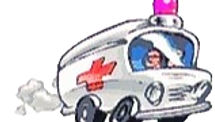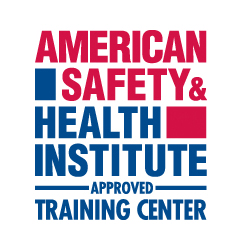

Medical
Arts
Training & Resources TT

Call Us Now : 868-794-8406 call or whatsapp
email : info@medicalartstraining.com
-
Quality
-
Education
-
Value
-
Convenience
CPR/AED
What are the Courses Like?

CPR
In-person training courses traditionally take place in a classroom. You will learn from a qualified CPR instructor and will be provided with a course manual. During the course students will have dummies to practice the application of CPR. This allows students to experience a “real” experience of how to deal with a victim requiring CPR. The first thing that will be taught in CPR certification classes is to remember that your role in saving a victim’s life is to keep them alive until the medical response team arrives.
During the CPR course, students will be assessed on their competency and skill level and those that show that they have learned the ability to apply the necessary skills, will receive their certification after their final written and practical exams. Classes often take 4-6 hours if you go with the classroom courses or quite a bit shorter if you do an online e-learning based certification.
Online courses have a lot of different variation in their course formats but typically are a much more time efficient way to go about getting certified. But be careful, not all online programs are created equal. To make sure you choose the right online course, make sure to read our guide to getting certified online.
Testing
The standard CPR test is in two parts:
Written Test: The written CPR test includes a series of question on the basics of CPR. This part of the test is to ensure that students understand when to perform CPR and how to perform CPR, and also know how to deal with various situations. The test is a multiple choice question test.
Skill Test: The second part of the CPR certification test involves applying the skills which students have been taught during the course. The instructors provide a dummy or manikin for students to demonstrate their CPR skills. This allows the instructors to verify that students have learned the proper technique of CPR, are able to follow protocol and know how to administer breaths and compression.
How Long is CPR Certification Valid?
CPR certification typically is valid for two years. When an individual wishes to have recertification they will be required to take the written test and the skill test to ensure that they have retained the proper knowledge, techniques and skills. When protocols have been changed, it may be necessary for the individual to retake the course.
FIRST AID
All classes offered
First Aid
Taking this First Aid training today can help to save someone's life tomorrow.
This First Aid Certification course is designed to teach you the basic skills if an accident happens. Someone chokes on an ice cube or gets stung by a bee. It is important to know when to call 911/811 – it is for life-threatening emergencies. While waiting for help to arrive, you may be able to help save someone's life.
Cardiopulmonary resuscitation (CPR) is for people whose hearts or breathing has stopped and the Heimlich maneuver is for people who are choking.
CPR should only be done if you have had the training.
You can also learn to handle common injuries and wounds. Cuts and scrapes, for example, should be rinsed with cool water. To stop bleeding, apply firm but gentle pressure, using gauze. If blood soaks through, add more gauze, keeping the first layer in place. Continue to apply pressure.
It is important to have a first aid kit available. Keep one at home and one in your car. It should include a first-aid guide. Read the guide to learn how to use the items, so you are ready in case an emergency happens.
-
EMT and Paramedic Refresher training packages, DOT, Florida Dept.of Education (CIE) - Bureau of EMS Approved School for NREMT renewals
-
First Aid Training
-
First Responder Training
-
ASHI - American Safety & Health Institute
-
Medic First Aid,
Approved Training Center for ASHI & Medic First Aid for the following classes…….
• Basic First Aid
• Advanced First Aid
• CPR and AED
• Pediatric CPR, AED, and First Aid
• Emergency Medical Response
• Wilderness First Aid
• Child and Babysitting Safety
-
AHA Heartsaver CPR/First Aid/AED
-
AHA Healthcare Provider BLS
-
Bloodbourne Pathogens/Infectious Diseases classes
-
EKG Technician
-
Phlebotomy Technician
-
I.V Infusion Technician
-
Defensive Driving
-
Emergency Vehicle Operators Cource (EVOC)
-
International Trauma Life Support (ITLS)
-
Emergency Medical Technician(EMT).
-
Emergency Medical Technician refresher training
-
EMT test prep for EMT finals and or National Registry Emergency Medical Technician (NREMT) exam.
-
if you have any questions about our classes or about a class thats not listed please dont hesitate to contact us..........
-
for class pricing please contact us about our very low and competitive rates.........
CPR & AED Training
Whether in the workplace or home, you need to be prepared to handle any life saving incident, which may arise within your vicinity.
In order to save life when an emergency occurs such as a heart attack, you need to possess lifesaving skills.
A CPR and AED certification can help get the necessary skills, which you can apply when you are confronted with life saving challenges. Therefore, one of the reasons why you need to undertake the CPR AED classes is to get the lifesaving skills to enable you perform first aid to a person who is in distress for instance, after a heart attack.
For example, in your home, a child, wife, or husband may suffer from a serious health condition, which requires an emergency response such as heart attack. This means that if you lack the skills, you will not be able to save the life of that child, husband, or wife. In an emergency health condition, such as heart attack and brain attack, the first minutes after the attack count in saving the life of that person. If cardiopulmonary resuscitation (CPR) is carried out within the first minutes after the attack, this can help save the life of that person.
With the CPR and AED certification, you get the opportunity to gain the lifesaving skills, which you can use to save lives of infants, children, and adults.



-
EMT and Paramedic Refresher training packages, DOT, Florida Dept.of Education (CIE) -
-
Bureau of EMS Approved School for NREMT renewals.
-
Accredited under (EEII) Emergency Education Institute international......
-
Pre-Hospital emergency medical management education, training and resources
-
AHA - American Heart Association classes in First Aid, BLS (Cpr), ACLS, PALS etc.
-
ASHI - American Safety & Health Institute and Medic First Aid,
approved Training Center for the following classes…….
• Basic First Aid
• Advanced First Aid
• CPR and AED
• Pediatric CPR, AED, and First Aid
• Emergency Medical Response
• Wilderness First Aid
• Child and Babysitting Safety
-
International Trauma Life Support (ITLS)
-
Pre-Hospital Trauma Life Support (PHTLS),
-
Emergency Vehicle Operators Course (EVOC),
-
Defensive driving,
-
Basic EKG interpretation,
-
12Lead EKG interpretation
-
Phlebotomy
And more, coming soon e.g.
-
Emergency Medical Technician (EMT),
-
National Registry EMT
-
International Registry for EMT and Paramedic


